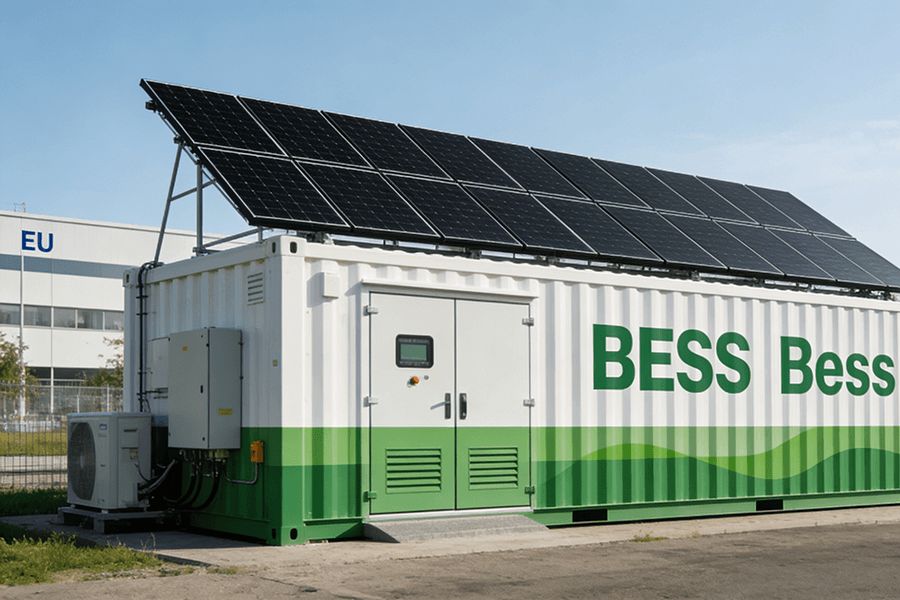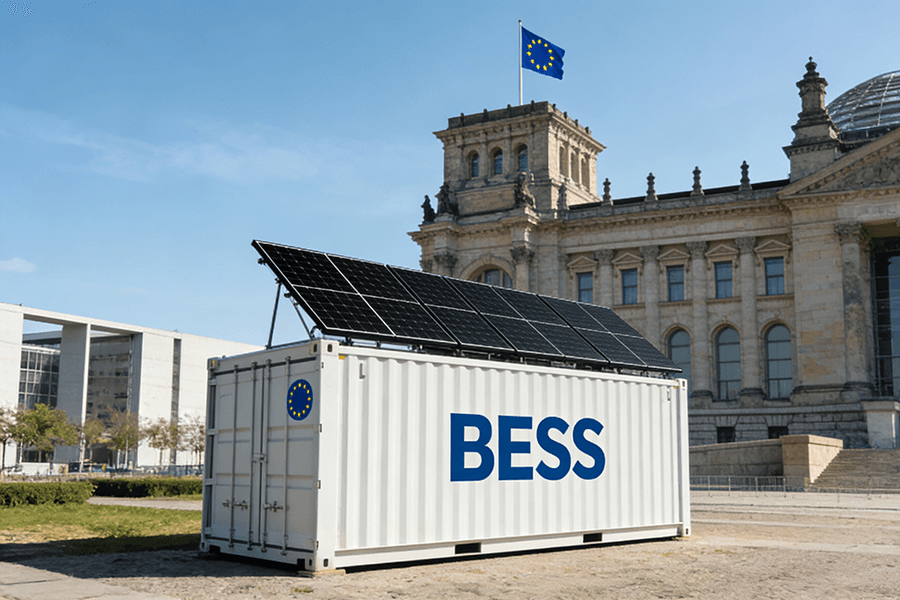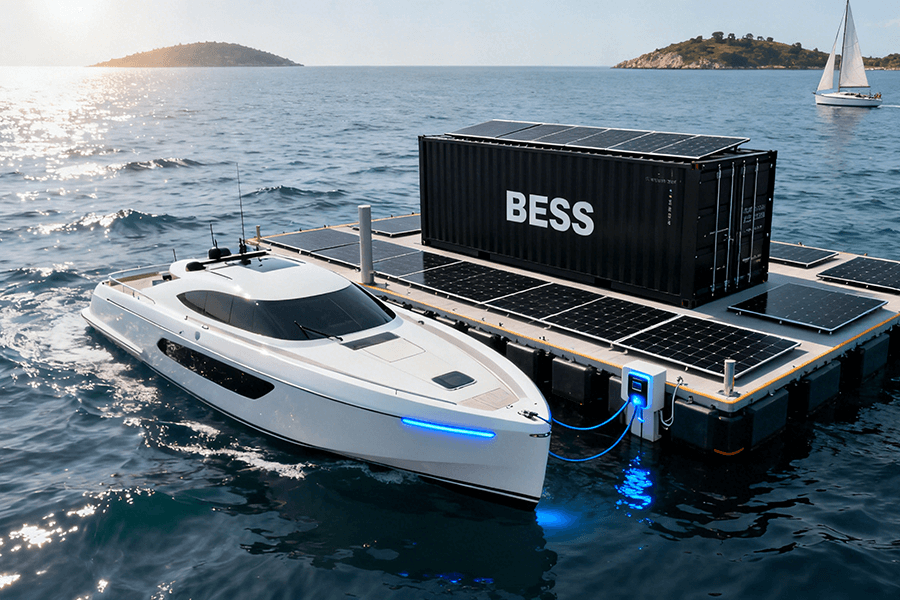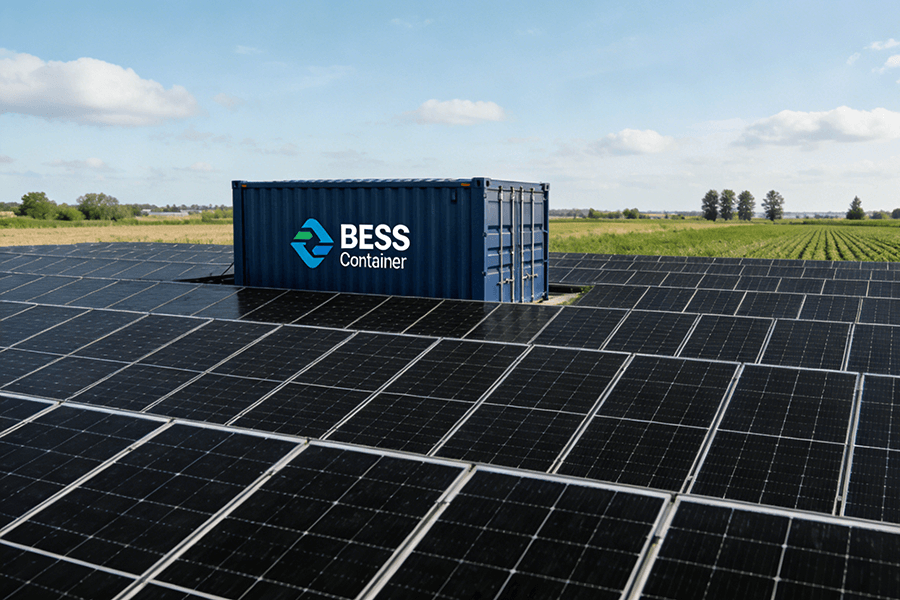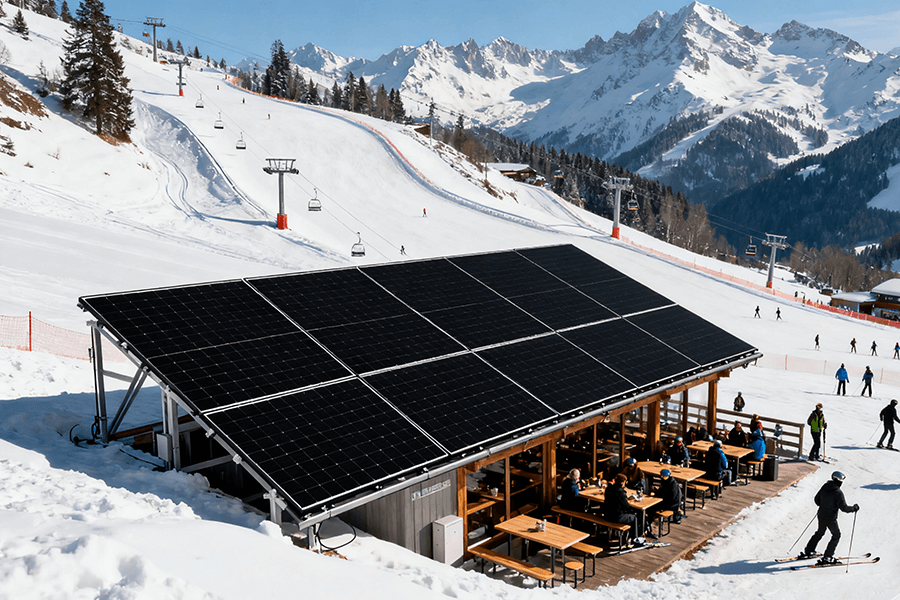
The Energy Tightrope of European Ski Tourism
Let’s set the scene: You’re a ski resort manager. It’s 8 AM, peak season, and a blizzard just took out the local power grid. Ski lifts are stuck mid-mountain. Snow guns—your lifeline for maintaining slopes—have gone silent. Guests in lodges are shivering, and the chaos is palpable. This isn’t a worst-case scenario; it’s a common one, playing out in alpine regions across Europe each winter.
Key Stats That Matter:
The scale and energy challenges of European ski resorts are staggering:
| Metric | Data | Source |
|---|---|---|
| Number of Ski Resorts | Over 2,000 | European Ski Federation |
| Annual Visitor Count | Exceeding 400 million | European Ski Federation |
| Resorts with Seasonal Power Disruptions | 60% of alpine resorts | Energy Research Centre of the Netherlands |
| Snowmaking Energy Consumption | 30–50% of total resort energy use | International Energy Agency |
| Lift Energy Consumption | Additional 20% of total resort energy use | International Energy Agency |
Case Studies: The Energy Intensity of Resorts
- Davos, Switzerland: In the expansive 150-hectare Parsenn ski area, the annual snowmaking operation guzzles a colossal 1.7 million kWh of electricity. To put this in perspective, that’s enough energy to power 500 average households throughout the year.
- Braunwald, Switzerland: Even smaller resorts aren’t spared. Braunwald, with its 25 km of pistes, still consumes 14,000 kWh/year solely for snowmaking efforts, as reported by the Swiss Federal Office of Energy.
The energy crisis post-2022 has compounded these challenges. Resorts like Austria’s Ski Amade, a major player in the European ski circuit, have been forced to implement drastic cost-cutting measures. These include slowing down lift operations, eliminating night skiing sessions, and even closing slopes prematurely. The financial toll? A staggering €50,000+ per day in lost revenue, according to the Austrian Ski Association.
Enter BESS containers—battery energy storage systems encased in robust, transportable units. These unsung heroes of the modern ski industry are revolutionizing how resorts manage energy, ensuring lifts keep running, snow guns stay operational, and lodges remain warm—all without melting away operational budgets.
Solving Ski Resort Energy Critical Needs: BESS to the Rescue
Ski resorts don’t just use energy—they depend on it to avoid disaster. BESS containers fix this with the speed of a downhill racer (response times <1 second) and the efficiency of a Swiss watch. Let’s break down their two biggest wins:
Ski Lift Power Backup: No More Stranded Skiers
Imagine being stuck on a high-speed lift 2,000 meters up—cold, hungry, and questioning your life choices. This isn’t just an inconvenience; it’s a serious safety risk. That’s the nightmare BESS eliminates, providing a reliable safety net for both skiers and resort operators.
How It Works:
BESS systems act as “instant backup” for lifts. When the grid fails, they kick in within <1 second—faster than the blink of an eye. This isn’t just convenience; it’s safety. A 2023 incident at a Swiss resort vividly demonstrated the effectiveness of BESS technology: A 2MWh BESS kept lifts running during a 3-hour outage, safely evacuating 500 skiers from a high-speed lift (source: Swiss Ski Resort Association).
Real-World Win: St. Gilgen am Wolfgangsee, Austria
A cable car operator in St. Gilgen am Wolfgangsee deployed an 184 kW/556 kWh SOLIS BESS to power lifts at 1,500 meters. This system is equipped with AMOS Renewable Intelligence, a cutting-edge technology that enables it to:
- Predict lift usage: Analyze historical data and real-time information to anticipate peak hours, such as 10 AM and 2 PM, ensuring that the BESS is ready to meet increased demand.
- Charge during off-peak times: Take advantage of lower electricity prices during the night when energy is cheapest, optimizing the cost-effectiveness of the system.
- Handle sudden demand spikes: Instantly respond to unexpected surges in demand, like when 50 skiers arrive at a lift simultaneously, maintaining smooth operations.
The results have been remarkable: zero lift outages in two seasons and a 15% boost in guest satisfaction (source: SOLIS Energy). These improvements not only enhance the skier experience but also contribute to the resort’s reputation and bottom line.
Snowmaking Energy Optimization: Slash Costs, Not Snow
Snowmaking is the biggest energy hog in ski resorts, running 24/7 during cold seasons and consuming a significant amount of electricity, especially during daytime peak hours when prices are highest. BESS addresses this challenge through energy arbitrage: charging the batteries at night when electricity is cheap and discharging during the day when prices are high.
The Numbers:
- Nighttime electricity (10 PM–6 AM): €0.10–€0.15/kWh
- Daytime peak (8 AM–8 PM): €0.30–€0.40/kWh
- Typical Savings: 25–35% on snowmaking costs (source: European Energy Agency)
Case Study: Austrian 3MWh BESS
A resort in Tyrol took a significant step towards energy efficiency by deploying a 3MWh BESS for snowmaking. In its first year of operation, the system achieved an impressive €300,000 in savings. These funds could be reinvested into the resort, such as adding 2 new ski runs or hiring 10 more staff, further enhancing the guest experience (source: Austrian Energy Storage Association).
How Savings Stack Up (By Resort Size):
| Ski Resort | Snowmaking Area | Annual Energy Use | BESS Size | Estimated Annual Savings | ROI Timeline |
|---|---|---|---|---|---|
| Braunwald, Switzerland | 4.3 ha | 14,000 kWh | 500 kWh | €4,200–€5,950 | 3–4 years |
| Scuol, Switzerland | 144 ha | 1 million kWh | 2MWh | €25,000–€35,000 | 4–5 years |
| Davos, Switzerland | 150 ha | 1.7 million kWh | 3MWh | €42,500–€59,500 | 5–6 years |
Data sources: Swiss Federal Office of Energy, Austrian Energy Storage Association
This data clearly shows that regardless of the resort’s size, implementing a BESS for snowmaking can lead to substantial cost savings over time, making it a worthwhile investment for the long-term sustainability and profitability of ski resorts.
Adapting to Harsh Alpine Environments: BESS That Laughs at -30°C
Alpine winters are a formidable force, with temperatures plummeting to -30°C, blizzards raging, and remote locations turning maintenance into a logistical nightmare. Yet, modern Battery Energy Storage System (BESS) containers are engineered to withstand these harsh conditions with resilience that rivals a skier’s determination to get back up after a hard fall.
Cold-Resistant Design: Built for the Freeze
Gone are the days of relying on delicate batteries ill-suited for extreme cold. Winter-proof BESS technology incorporates multiple innovative features to ensure optimal performance even in the harshest alpine environments:
- Military-grade insulation: Advanced insulation materials create a thermal barrier that maintains internal temperatures above 0°C, even when the mercury dips to -30°C outside. This not only protects the battery cells from freezing but also preserves their efficiency and lifespan.
- Phase-change material (PCM) buffers: PCMs are smart materials that absorb heat during the charging process and release it during discharge. This dynamic heat regulation mechanism acts as a natural thermostat, preventing the battery from freezing and ensuring consistent performance in fluctuating temperatures.
- Battery heating systems: Low-wattage heaters integrated into the BESS are equipped with intelligent sensors that automatically activate when temperatures drop below -5°C. These heaters provide just enough warmth to keep the battery cells in their optimal operating range without consuming excessive energy.
Example: Lovsun ECube BESS
The Lovsun ECube BESS is a prime example of cold-resistant battery technology. Thanks to its advanced liquid cooling system, this state-of-the-art BESS can operate reliably in temperatures ranging from -30°C to 50°C. In the frostiest winters of Norway, it maintains an impressive 95% of its rated capacity, ensuring a consistent power supply for ski resorts and other critical infrastructure. (source: Lovsun Energy)
Maxbo Solar’s Winter-Proof Edge
Maxbo Solar’s 2025 deployment at a Norwegian ski resort showcases the cutting-edge capabilities of BESS technology in extreme cold. This 1.2MWh BESS system is a game-changer, powering 100% of the resort’s renewable heating needs for lodges and lift stations, even at -30°C. Over the course of five months, it has operated flawlessly, with no signs of “battery hibernation” or performance degradation. This remarkable reliability has set a new standard for energy storage in alpine environments. (source: Maxbo Solar)
Remote Monitoring: Fix Issues Without Climbing a Mountain
In the mountains, blizzards can quickly render roads impassable, making on-site maintenance a near-impossibility. However, BESS systems can’t afford to wait for the weather to clear. IoT-enabled remote monitoring solutions have revolutionized how operators manage and maintain BESS in remote locations:
- Real-time health tracking: Through a user-friendly mobile app, operators can monitor key battery health metrics in real-time, including state of charge, temperature, and cell voltage. This comprehensive overview allows for proactive management and early detection of potential issues.
- Instant alerts: Advanced sensors continuously analyze the BESS’s performance and trigger real-time alerts whenever anomalies are detected. Whether it’s a sudden drop in capacity, abnormal temperature fluctuations, or other critical issues, operators are immediately notified, enabling them to take swift action.
- Remote troubleshooting: With remote monitoring capabilities, operators can diagnose and resolve 80% of BESS issues without the need for on-site visits. From adjusting charging schedules to optimizing energy distribution, remote troubleshooting saves time, reduces costs, and minimizes downtime.
SOLIS BESS in Austria
The SOLIS BESS in Austria takes remote monitoring to the next level with its AMOS intelligence system. This advanced predictive analytics tool uses machine learning algorithms to anticipate potential issues before they occur. For example, it can accurately forecast when battery capacity will drop below a critical threshold, allowing operators to schedule maintenance or take preventive measures in advance. As a result, on-site maintenance has been reduced by 70%, saving the resort a staggering €12,000 per year in technician travel costs. (source: SOLIS Energy)
Renewable Energy Synergy: Sustainable Skiing That Works
Ski resorts worldwide are increasingly embracing sustainability to meet the growing demand from eco-conscious guests. However, relying solely on wind and solar power, which are inherently intermittent, poses a significant challenge. This is where Battery Energy Storage Systems (BESS) come into play, transforming the unpredictable nature of renewable energy into a reliable power source, thus making sustainable skiing a tangible reality.
Wind-Snow-Storage Integration: Harnessing Mountain Winds
Mountainous regions are veritable goldmines for wind power, characterized by strong, consistent gusts that often go untapped. BESS technology provides the solution by storing excess wind energy during peak production periods, ensuring a steady supply when demand surges.
Case Study: French Pyrenees Resort
Nestled at an altitude of 1,800 meters, a resort in the French Pyrenees implemented an innovative energy solution by pairing a 1.5MW wind turbine with a 2.5MWh BESS. The results have been remarkable:
- Energy Independence: 40% of the energy required for lift operations and snowmaking now comes from wind power, significantly reducing the resort’s reliance on the grid.
- Environmental Impact: The system has led to an annual reduction of 300 tons of CO₂ emissions, equivalent to taking 65 cars off the road.
- Operational Reliability: By storing excess wind energy, the resort has eliminated the problem of “wind droughts,” ensuring seamless operations throughout the season. (Source: French Renewable Energy Federation)
Solar-Storage for Lodges: Maximizing Winter Sunlight
Even during the winter months, when sunlight is scarce, solar power can still play a crucial role in a ski resort’s energy mix. Rooftop solar panels on lodges can capture the available sunlight, with BESS storing the generated energy for use during peak evening hours when guests require heating and lighting.
Case Study: Italian Dolomites Lodge
A luxurious 5-star lodge in the Italian Dolomites installed a 500kW solar system across its rooftops and parking canopies, complemented by an 800kWh BESS. The outcomes have been impressive:
- Cost Savings: The lodge now consumes 28% less grid power, resulting in annual savings of €18,000.
- Year-Round Efficiency: Despite the lower winter sun angles, the solar system still generates 30% of its summer output, thanks to modern, high-performance panels.
- Marketing Advantage: The “100% green stay” concept has resonated well with guests, leading to a 12% increase in bookings. (Source: Italian Solar Association)
Maxbo Solar’s Solar-BESS Edge
Maxbo Solar’s solutions are specifically optimized for winter solar conditions. Our systems feature:
- High-Efficiency Monocrystalline Panels: With an efficiency rate of over 23%, these panels can capture maximum energy even during short winter days.
- Fast-Charge BESS Technology: Enables rapid energy storage, ensuring that no sunlight goes to waste.
A client in the Swiss Alps witnessed a remarkable 35% winter solar utilization rate, 10% higher than the industry average. (Source: Maxbo Solar)
Why Maxbo Solar BESS Is the Ski Resort Game-Changer (From Someone Who Lives It)
As a product manager at Maxbo Solar, I’ve spent five years immersing myself in the unique challenges of ski resorts. From trekking up snow-capped peaks to engaging in in-depth discussions with resort managers, I’ve dedicated myself to finding solutions for their persistent energy issues. We didn’t just create a battery; we engineered a comprehensive system that understands and caters to the intricacies of alpine life.
Here’s what sets our Battery Energy Storage System (BESS) apart from the competition:
✅ Winter-Proof by Design
Designed to withstand the harshest winter conditions, our BESS is built with resilience in mind:
- Extreme Temperature Range: Thanks to military-grade insulation and Phase Change Material (PCM) buffers, our BESS operates flawlessly between -30°C and 50°C. This ensures reliable performance, whether it’s a frigid day on the slopes or a warm spell in the mountains.
- Consistent Capacity: Even in extreme cold, our BESS maintains an impressive 95% capacity, guaranteeing no drop in performance when it matters most.
- Rigorous Testing: Tested in some of the coldest regions in the world, including Norway, Sweden, and the Swiss Alps, our BESS has proven its mettle in the harshest winter environments.
✅ Seamless Integration
We understand that upgrading your energy system shouldn’t disrupt your operations. That’s why our BESS is designed for seamless integration:
- Compatibility: Our BESS works harmoniously with existing infrastructure, including ski lifts, snow guns, solar panels, and wind turbines. There’s no need for costly overhauls or extensive modifications.
- Expert Installation: Our in-house team of experts handles the entire installation process, no matter how remote the location. In fact, we’ve even used helicopters to deliver and install units in hard-to-reach areas!
- Software Integration: Our BESS integrates seamlessly with resort management software, allowing you to track energy usage alongside bookings. This provides valuable insights into your energy consumption patterns and helps you make informed decisions.
✅ Hard Savings, Fast ROI
Investing in our BESS isn’t just about energy storage; it’s about saving money and achieving a quick return on investment:
- Cost Savings: Our BESS can cut your energy costs by 25–35% through peak shaving and the use of renewable energy sources. This translates to significant savings on your energy bills over time.
- Fast ROI: With an average return on investment of 4–6 years, our BESS pays for itself faster than new ski lifts or slopes. In fact, one of our Norwegian clients saved €80,000 in 2025 alone—enough to cover the cost of the BESS in just five years.
- Long-Term Value: By reducing your reliance on traditional energy sources, our BESS not only saves you money but also helps you achieve your sustainability goals.
✅ Low-Maintenance Peace of Mind
We believe in providing our customers with a hassle-free experience. That’s why our BESS comes with a range of features designed to minimize maintenance and maximize peace of mind:
- Remote Monitoring: With our user-friendly app, you can monitor the health of your BESS from anywhere—whether you’re at your desk or on the ski lift. Stay informed about battery status, energy usage, and more.
- Automated Alerts and Support: Our BESS is equipped with automated alerts that notify you of any potential issues. In addition, our 24/7 support team is always on standby, ready to respond to your queries within an hour.
- Comprehensive Warranty: We stand behind the quality and reliability of our systems. That’s why we offer a 10-year warranty on all our BESS units, even in the challenging mountain environment.
At Maxbo Solar, we’re not just selling energy storage; we’re selling peace of mind. With our BESS, ski resorts can focus on what they do best—providing unforgettable experiences for their guests—without having to worry about power outages or energy costs.
Ready to take the next step? Visit www.maxbo-solar.com to learn more about our BESS and how it can benefit your resort. Or, if you prefer, email me directly at [email protected] to discuss your specific needs and receive a personalized quote. Let’s work together to power your slopes and stays with reliable, sustainable energy.
Conclusion: The Future of Ski Resort Energy
BESS containers aren’t a luxury—they’re a necessity. With 60% of alpine resorts facing grid instability, energy costs up 40% since 2022, and guests demanding sustainability, BESS is the only way to keep slopes open and profitable.
The data speaks for itself:
- Resorts with BESS save €25,000–€300,000/year (depending on size).
- They cut CO₂ by 300+ tons/year (win for the planet, win for marketing).
- They avoid costly outages—saving €50,000+ per day in lost revenue.
By 2032, 70% of large European ski resorts will have deployed BESS containers (source: European Energy Storage Council). The question isn’t if you need BESS—it’s when.
For Maxbo Solar, this is just the start. We’re building BESS systems that don’t just survive the mountains—they thrive in them. Because every skier deserves a lift that runs, snow that stays, and a lodge that’s warm. And every resort deserves to stay profitable while delivering it.
Let’s power the slopes—together.

